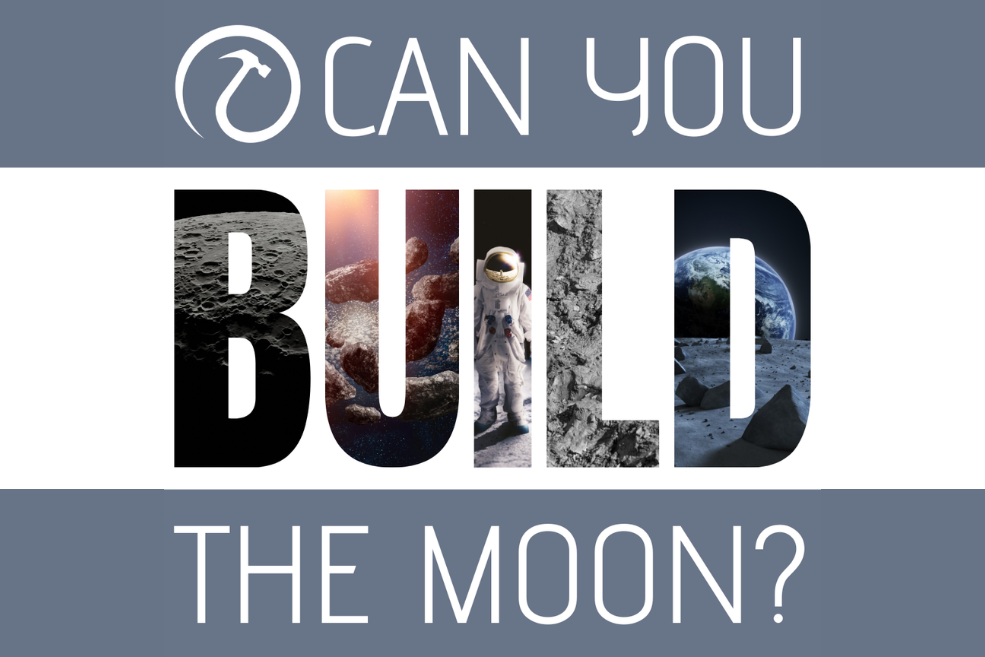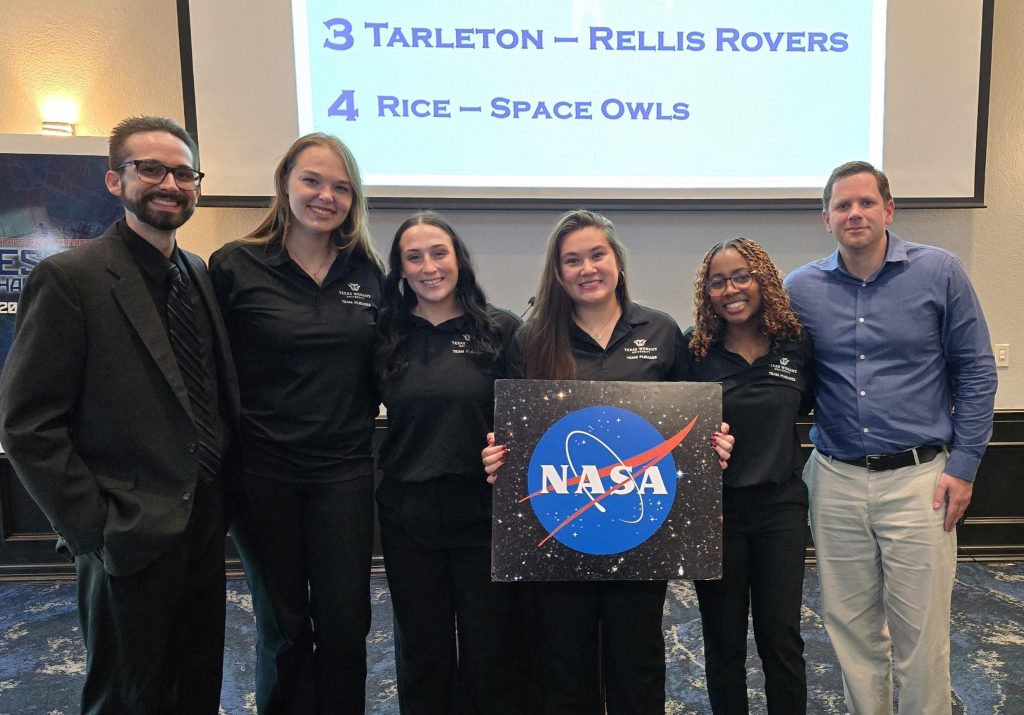
Texas Space Grant Consortium would like to give a big welcome to our three new affiliates: Houston Spaceport, the Dee Howard International Education Foundation, and Stephen F. Austin State University.
Design Challenge Applications To Open in January

*TSGC-based or sponsored opportunity
Texas Space Grant is happy to announce that the Spring 2025 Design Challenge applications will open in January. TSGC’s Design Challenge offers undergrads the chance to work on a design solution based on NASA’s research objectives.
Teams of 3-6 undergrads will work together to complete their design objectives with a Faculty Advisor and NASA Mentor. At the end of the semester, teams will present their work at the Showcase in Houston where $10,000+ in scholarships will be awarded.
To get the newest updates on Design Challenge announcements, follow us online.
NASA Announces New Challenge: Help Build the Moon!

NASA is heading back to the Moon! But in order for astronauts to stay on the lunar surface for long periods of time, new infrastructure, habitats, and systems are needed.
Can your students (6th through 9th graders) help determine how to use lunar regolith to create concrete and help NASA build on the surface of the Moon?
TSGC Grant Funding applications will close on December 15. Click here to learn more.
Check out the Build the Moon website to learn more.
Send a Rocket to Suborbital Space! – RockOn 2025 Applications Now Open

Taking place at the Wallops Flight Facility, RockOn! is a hands-on workshop teaching participants how to create a sounding rocket experiment from scratch over a 5-day period and then launching it into space.
Teams must sign up as a community college or university team; no individual registrations will be accepted. Please note that RockOn will be limited to 28 teams.
Applications are due February 14.
Click the button below to learn more about the workshop and how to apply.
Design Challenge Awards

TSGC would like to thank everyone who could attend the Design Challenge Showcase in person – teams, faculty, NASA mentors and guests, and a special thank you to our judges for their efforts, and to Dr. Douglas Terrier for an incredible opening talk and Q&A session.
Below are the top showcase awards:
Best Poster & Model
1. Lamar University – The Astroneers
2. Texas Woman’s University – Team Pleiades
3. Texas State University – Effectively Grounded!
4. Tarleton State University – RELLIS Rovers
Best Oral Presentation
1. Texas Woman’s University – Team Pleiades
2. University of Houston Clear Lake – The Backyardigans
3. Texas State University – Schrodinger’s Bobcats
4. Tarleton State University – RELLIS Rovers
Best Peer Review
1. Texas Woman’s University – Team Pleiades
2. Texas State University – Schrodinger’s Bobcats
3. Rice University – Artemis Owls
4. Tarleton State University – RELLIS Rovers
Combining scores for the above categories, the top design teams are named. Students from the top 4 design teams have earned scholarships for their work.
Top Design Teams
1. Texas Woman’s University – Team Pleiades
2. Texas State University – Schrodinger’s Bobcats
3. Tarleton State University – RELLIS Rovers
4. Rice University – Artemis Owls
Congratulations to all the students and many thanks to their faculty and NASA Mentors.
Although the Showcase may be over, you can still experience it again through our social media channels:
Check out our YouTube channel to watch the Showcase Morning & Afternoon Sessions and the Award Ceremony
Head on over to our Instagram to see the 19 teams introduce their projects.
Visit our website to read Team Profiles, watch Team videos, and see their research posters.
THIS MONTH IN SPACE

DEC. 3, 1973
FIRST FLYBY OF JUPITER
Pioneer 10 has its closest encounter with Jupiter. It was the first spacecraft to obtain close-up images of Jupiter, and three of its largest moons: Ganymede, Callisto, and Europa.
DEC. 7, 1968
NASA LAUNCHES OAO-2
Nicknamed Stargazer, the Orbiting Astronomical Observatory (OAO-2), launches into orbit from Cape Kennedy.
DEC. 14, 1962
MARINER II SENDS BACK INFO FROM VENUS
Mariner 2 was humanity’s first successful planetary science mission. The first close-up look at another planet was full of surprises: Mariner 2 found Venus to be inhospitable, and far hotter than expected.
DEC. 21, 1968
APOLLO 8 LAUNCHES
Apollo 8 was the first crewed spacecraft to leave Earth’s gravitational sphere of influence, and was the first human spaceflight to reach the Moon. The crew orbited the Moon ten times without landing and then returned to Earth.
DEC. 27, 1968
JOHANNES KEPLER BORN
German astronomer and mathematician, Johannes Kepler, is born. Kepler, without knowing about the force of gravity, mathematically described the motions of the planets around the sun in his three laws of planetary motion. His work was key in providing evidence for Nicolaus Copernicus’ theory that the sun, not Earth, was at the center of the solar system.
